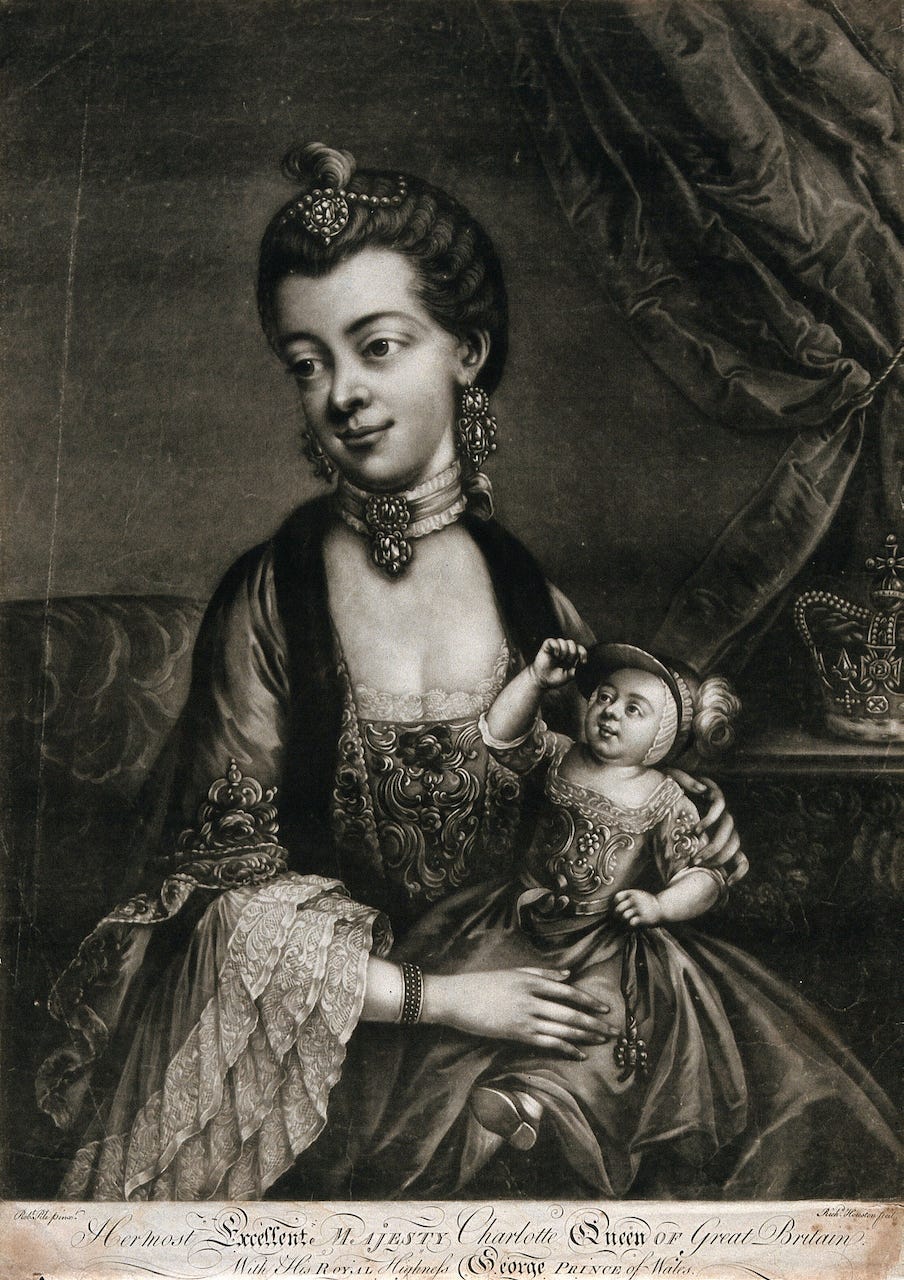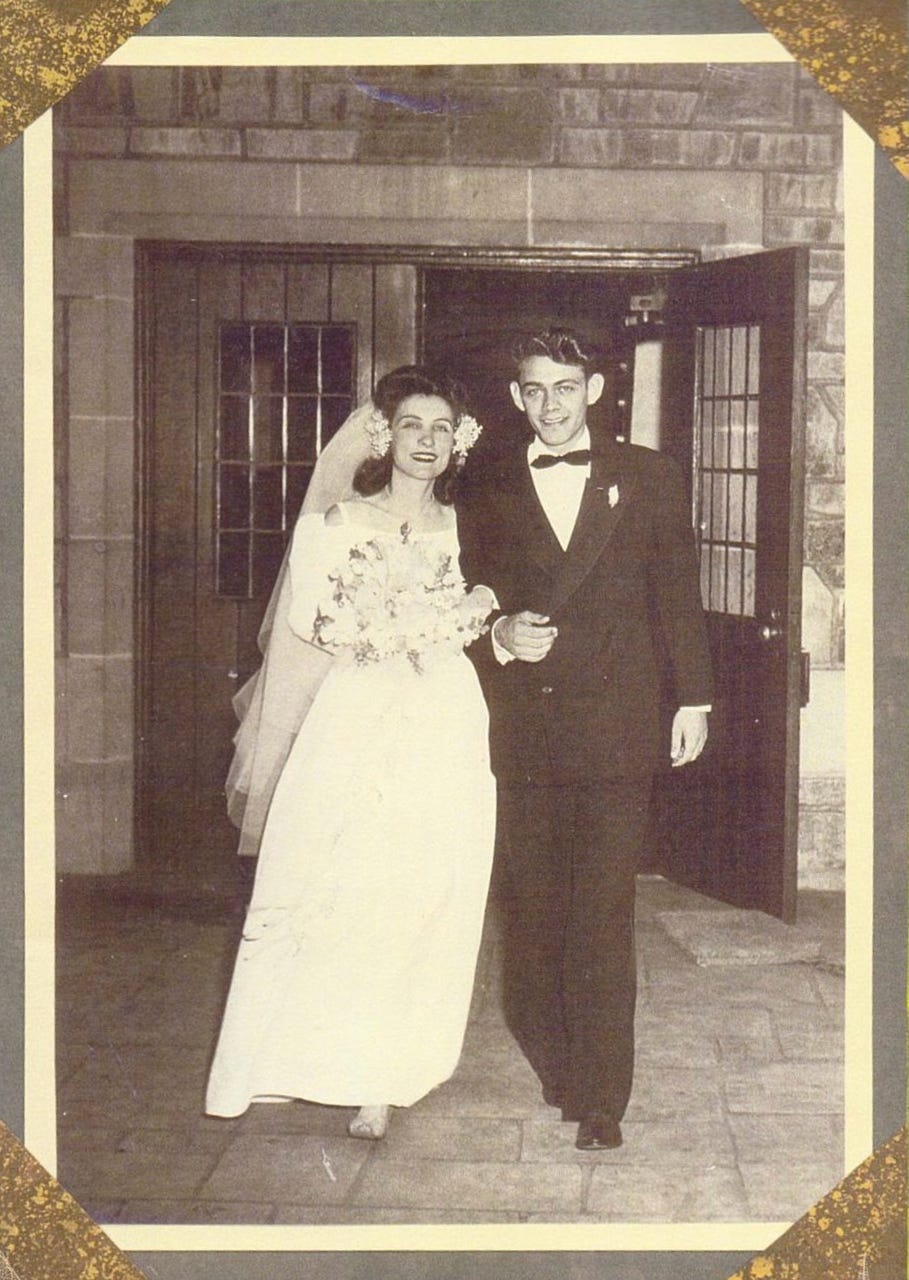The Remarkable Sophia Charlotte
This British queen from Mecklenburg-Strelitz, Germany made her mark then, and now

Last weekend, my husband and I drove to Charlotte for a Big Head Todd and the Monsters concert. We arrived early. With a few hours to kill before our favorite ’90s band took the stage, we stopped by Sophia’s Lounge on North Tryon for a pre-concert cocktail. Or two.
It was like walking into Queen Charlotte’s drawing room. Dimly lit Georgian chandeliers hung above vintage furnishings. A grand painting of the city’s namesake took center stage between two chairs that might as well be from Buckingham Palace. The menu presented cocktails with names like Paper Crown, Your Highness, and The Sovereign. I chose one called King of Thorns (and quickly realized how it got its name after the Firewater Bitters kicked in.)
Like the Queen City, Sophia’s Lounge is named after Queen Sophia Charlotte of Mecklenburg-Strelitz, Germany. Her presence reaches into Virginia (Charlottesville), Canada (Charlottetown), West Falkland (Queen Charlotte Bay), and New Zealand (Queen Charlotte Sound). There are two Mecklenburg counties named after her—in North Carolina where Charlotte is located, and in southern Virginia—ironically not where Charlottesville is located. And then of course, there is “Bridgerton” and “Queen Charlotte: A Bridgerton Prequel.”
Our cocktails arrived. I thought about Queen Charlotte’s life and did a quick Google search to learn more about this pop culture icon. Born in 1744, the youngest daughter of Duke Charles Louis Frederick of Mecklenburg-Strelitz and Princess Elizabeth Albertina of Saxe-Hildburghausen, Sophia Charlotte grew up in northeastern Germany and later learned English. (She reportedly picked it up quickly.) When 22-year-old King George III of Britain succeeded to the throne in 1760, he took a liking to the eligible 17-year-old princess. They wed on September 8, 1761, and on August 12, 1762, Charlotte bore their first child—the Prince of Wales, George IV. King George and Queen Charlotte went on to have fourteen additional children. (Clearly family planning was not a priority.)
The royal couple enjoyed listening to composers of the day. Charlotte’s music-master was Johann Christian Bach, the eleventh son of Johann Sebastian Bach. Wolfgang Amadeus Mozart performed for her royal highness at the young age of 8. So pleased was he with the queen’s favor that in 1765, 9-year-old Mozart dedicated his “Opus 3” to her.
But like Mozart, Charlotte wasn’t done being remarkable. In honor of her interest in botany, the South African bird of paradise flower was named Stretlitzia reginae after her. Charlotte also founded numerous orphanages and took on the role of Patron of the General Lying-in Hospital, subsequently renamed The Queen’s Hospital, and now known as Queen Charlotte’s and Chelsea Hospital.
I finished my cocktail and said to my husband, “Sophia Charlotte would approve of this lounge.” We ordered another round.
I thought some more about Charlotte—but this time, I considered the city and its connection to my life. My grandmother, mother, and two aunts attended Queens College in Myers Park, which started out as the Charlotte Female Institute, then became the Seminary for Girls, then the Presbyterian Female College, and finally Queens College in 1912. That’s also the year it moved from College and 9th streets to its current location on Selwyn Avenue. These days they call it Charlotte University.
While my grandmother was at Queens, my grandfather was at Davidson. They attended dances and socials conjointly held by both schools. On May 31, 1946, they got married at Myers Park Presbyterian Church, right across the street from Queens College—and on the same day my grandmother graduated.

My oldest son lives in downtown Charlotte. Before that, he lived in Davidson, less than a mile away from where his great-grandfather—with whom he shares a birthday—attended college 73 years earlier.
I’ve probably passed through Charlotte more times than I’ve watched John Hughes movies. From Athens to Roanoke, Raleigh to Columbia, Columbia to Blacksburg. Not sure I can put into words how much the Queen City has changed since the mid-1980s.
I looked at my watch. Our pre-concert cocktail hour had come to an end. It was only right to raise our Paper Crown and Sophia’s Old Fashioned to a queen who birthed 15 children, rescued orphans, and revered a king who suffered more than one mental breakdown. Sophia Charlotte unquestionably deserves the cities, counties, bay, sound, TV show, opus, flower, and cocktail lounge named after her.
Today we are back in Charlotte for another concert. This time we will hear our son perform as a violist in the Charlotte Civic Orchestra. As the musicians erupt into Mozart’s “Eine Kleine NachtMusik” (“A Little Night of Music”), I can’t help but think of Sophia Charlotte. She would have been 43 in 1787 when Mozart wrote it. Her oldest child, George IV, would have been 25. Her youngest, Princess Amelia, would have been 4. Just a few years prior, she had endured the death of her two youngest sons.
Throughout these difficulties, Sophia Charlotte remained devoted to a king who would suffer his first bout of mental illness the very next year. She would also go on to wield influence over her son, George IV, when he became regent, despite continuous disagreements and reconciliations between the two of them.
Sophia Charlotte served as queen for 57 years, producing an heir—and quite a few spares. Her fifth child and fourth soon, Prince Edward, fathered Queen Victoria, who reigned for 63 years—to be surpassed only by her great-great-granddaughter, Elizabeth II, who reigned for 70 years.
I’d say Queen Charlotte deserves every honor she has received. No doubt, after a long day of decision-making, receiving guests, and navigating family drama, she had plenty of reasons to retire to her very own Sophia’s Lounge, where I’m sure she enjoyed a little night of music … and a cocktail. Or two.






An excellent read. Now I better know the city. I'll add that your grandfather bore a striking resemblance to Clark Gable.